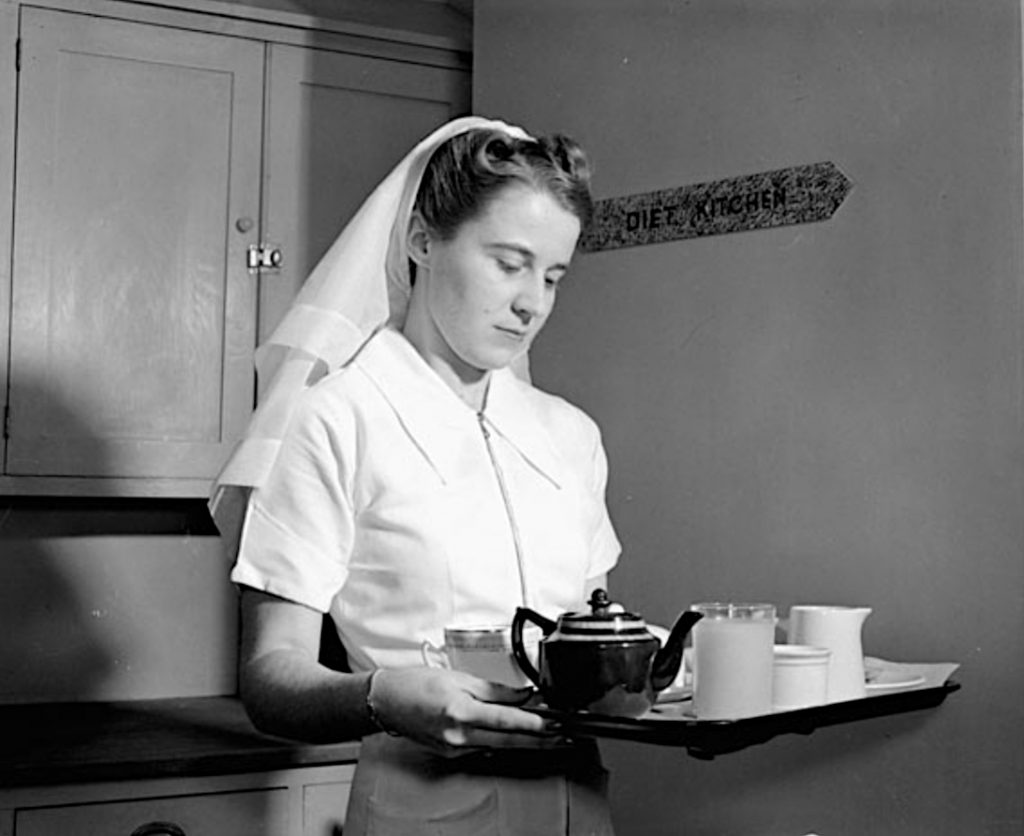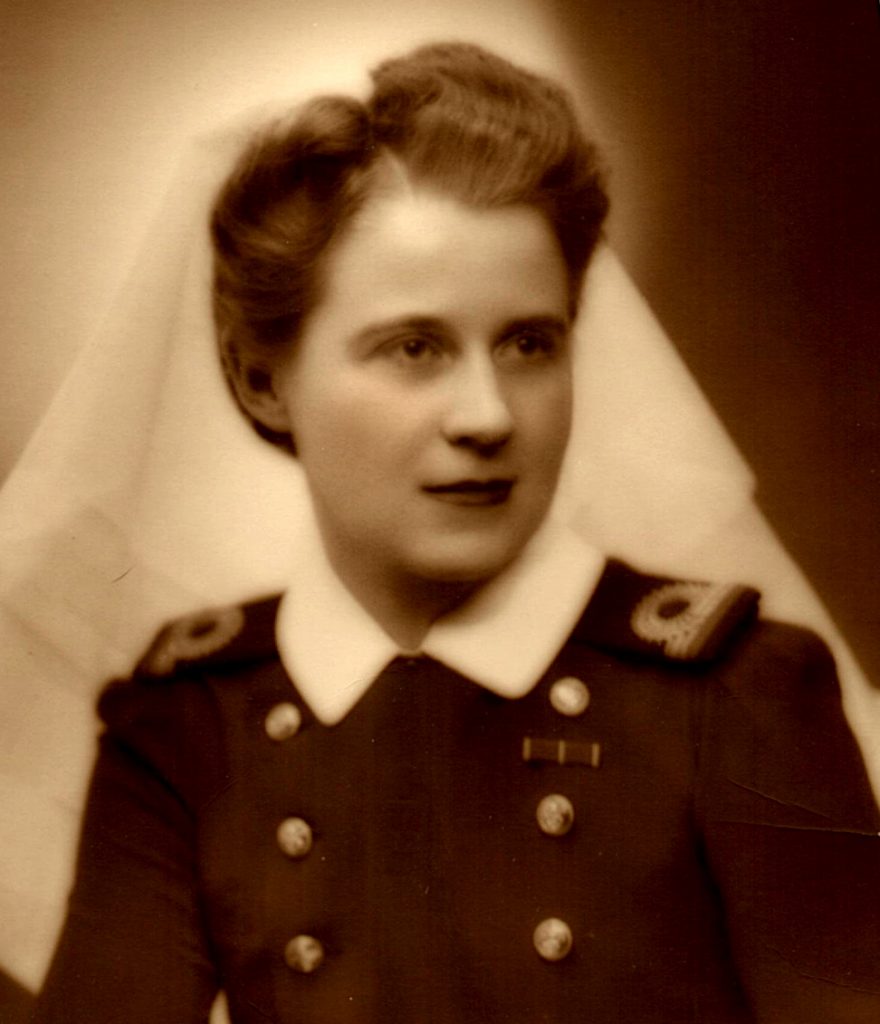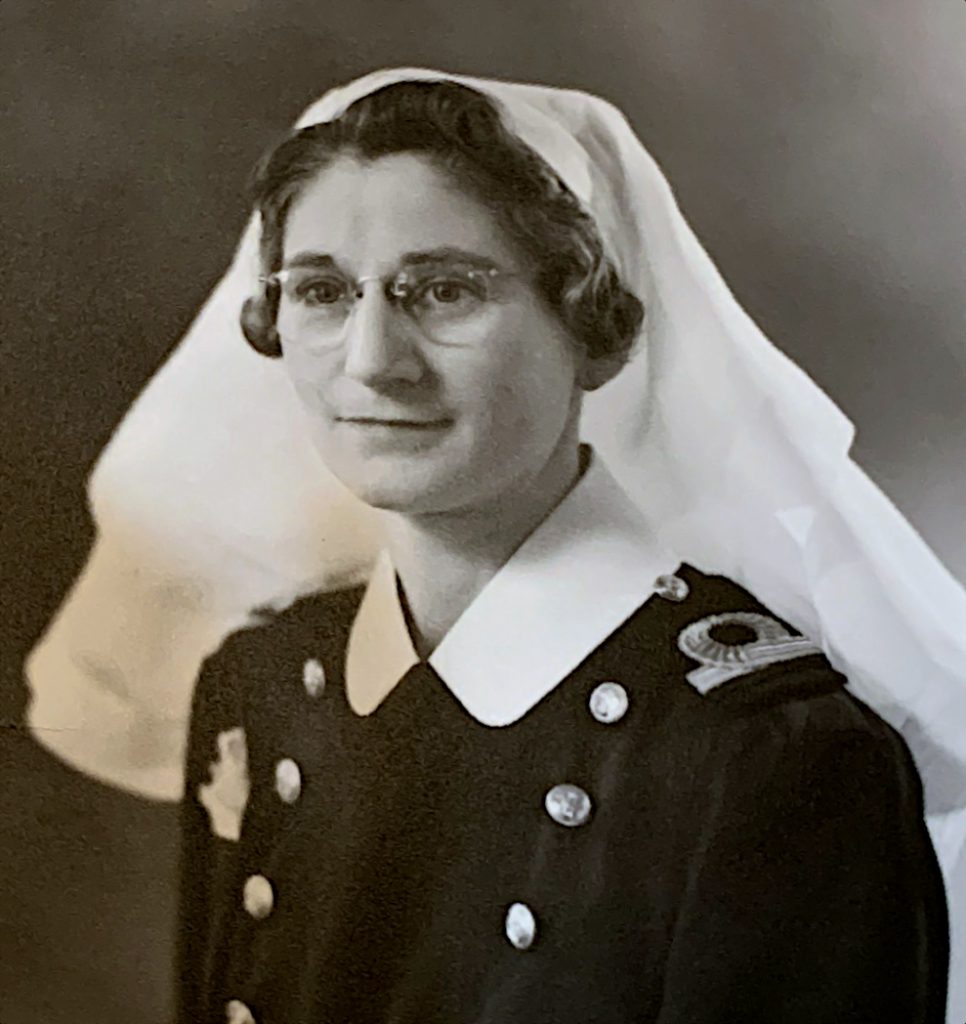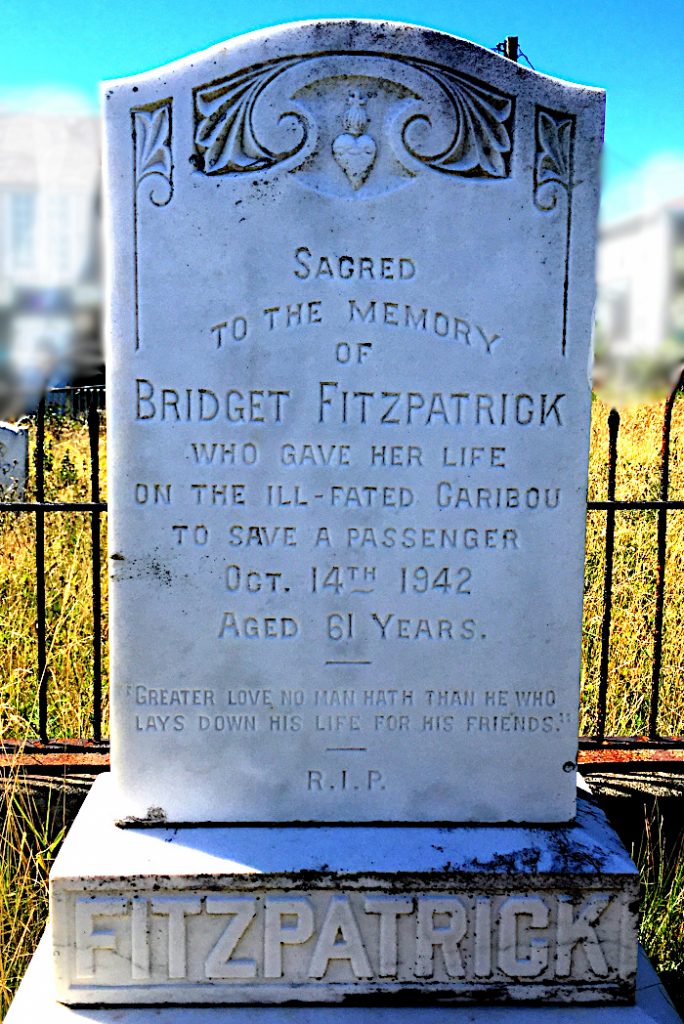Three good women
That evening, Canadian Nursing Sisters Agnes Wilkie and Margaret Brooke settled into their cabin on the ferry. Before sleeping, Margaret studied the lifebelts hanging over her bunk.
After the explosion, the two nurses found their assigned lifeboat was gone. They pulled on their lifebelts and went down with the ship. When they reached on the surface, they were still holding hands.
Aloysius Bourque pulled them into damaged lifeboat No. 3. Margaret held onto Agnes with one hand and the lifeboat with the other. After hours in the frigid ocean, a wave pulled an unconscious Agnes from Margaret’s exhausted grip.
Listen to a reading of how Margaret Brooke described the sinking (with a transcript)
Sailors on H.M.C.S. Grandmere hoisted aboard four survivors from lifeboat No. 3. Margaret was so cold she could not unclench her jaw to drink coffee. Crewmen warmed her in a hammock under steam pipes.
With children on board, Stewardess Bridget Fitzpatrick had not expected much sleep. But she was wearing her nightgown when the torpedo hit. She pulled on her greatcoat and lifebelt, and ran upstairs to load women and babies into lifeboat No. 4.
The bodies of Agnes and Bridget were recovered that evening. They were the only women killed by enemy action in the Royal Canadian Navy and Newfoundland Merchant Navy respectively in World War II. Agnes was buried by an honour guard of Navy nurses in St. John’s, while Bridget was buried in Bay Roberts.
Margaret Brooke was made a Member of the Order of the British Empire for her gallantry and courage during the sinking.





